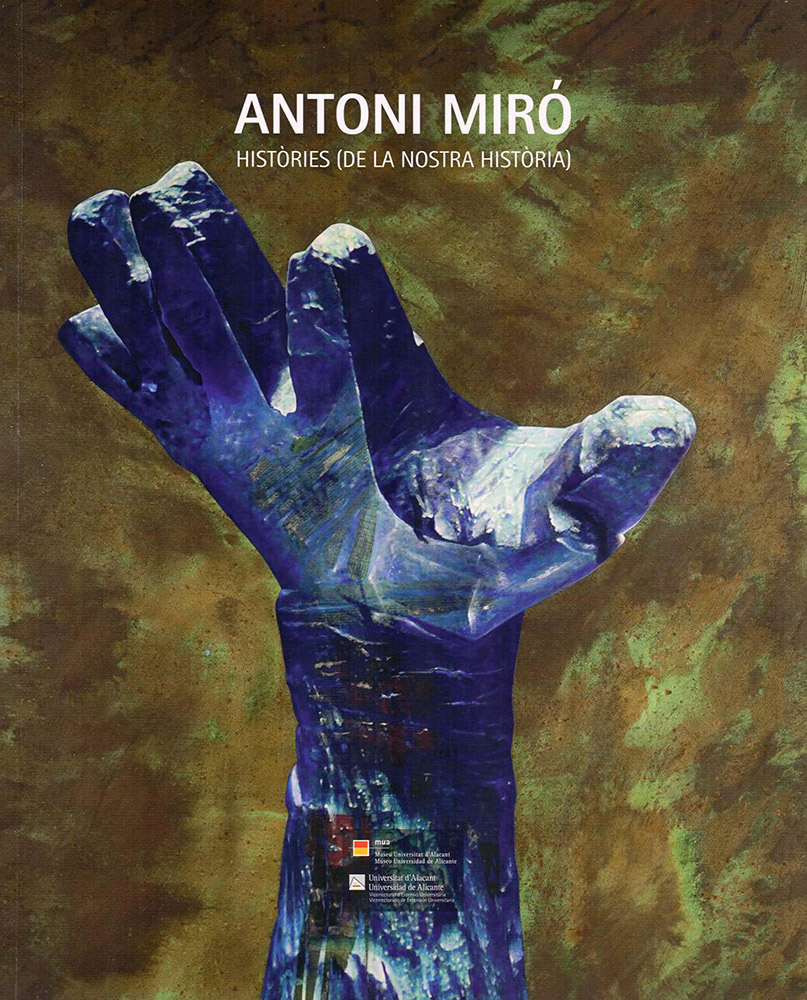Antoni Miró: the history of the reality
Jesús Pradells
With this exhibition, hosted by the University of Alicante supporting Antoni Miró´s career, we review more than sixty years of the painter's life. More than forty years devoted exclusively to art. Meticulous and continuous references marked by civic and social commitment of an artist who believes in the usefulness and persuasiveness of the intellectual's class. A commitment also reflected in the path of Miró when participating in groups promoting respect and influence among artists.
Miró´s painting has left its mark on various artists. From his different studies, either from Altea or the Sopalmo, he has been constantly connected with the most prominent artists and intellectuals of all times, both abroad and at home, and a challenge that brings you to maintain a correspondence with writers, visual artists or art critics of great interest to scholars of his work and social and cultural context of the last fifty years of our country.
It must be said that this Miró is not a painter who has been physically isolated in his studio; in fact, Antoni Miró has always been fully connected to world news and has been able to travel somehow to the place where his paintings are, and have become an extension of his personality and thinking. His work, whether in solo or group exhibitions, has been shown over fifty countries. And even today, Miró takes special care with all the calls in which it participates, making a comprehensive monitoring of the organization and development of samples, helping at all times to provide the best possible vision ever for the visitor. It also looked to us as an artist who does not care about the criticism of conservatives and, in several occasions he tried to prevent the spread of his work.
He is an artist friend of artists who is constantly worried because he, better than anyone, knows the effort needed to work in this field. No wonder, therefore, he defines himself as an “art worker” the same way that other people are proletarians of the industries or companies, with the obvious difference of employee status for himself, a condition that it gives an enviable independence and also supports the most successful creative space of Miró: his Mas Sopalmo, a space that gives you plenty of satisfaction and is one of the biggest constraints on the evolution of his painting in recent decades. I might add, now more than ever, that Toni Miró was a historian in power, as he has interpreted the events of history that have impressed him most through his brush. A review of the facts has given us one of the most lucid and critical eyes of our environment in the last forty years.
We cannot forget in this brief tour of his figure, through its particular view of history, his unwavering commitment to his friends, and to any cultural or civic initiative that has progressive and seek the denunciation of social injustices as presented in his works. The painter Miró itself has three basic elements of Miró person: social concerns, the national debate and a taste for humans. An interest in the inner beauty of the individuals known which comprises the three axes targeted.
And in this ideological sense, it should be noted the profound influence of the writer Joan Fuster in the training of the painter. The writer explained to the generation of Antoni Miró what was needed to overcome the manipulation that had hidden historiographical Valencia´s industrial and social failure, which had to stop stereotyping and that should provide a more modern and comprehensive society and aware of social inequalities, while stood in the cultural frame that belonged to him. Miró’s work is a direct consequence of these postulates, becoming an active and decisive response to the outcry from Fuster. It is clearly not the only artist influenced by the ideas of the essayist, but surely it is a path more marked by their influence and more homogeneous.
Once highlighted the social aspect of his work, it is clear that Miró´s painting is always close to the losers, and more in recent years, when he has been able to add items such as sex or outrageous urban destroyer of nature from an irony that immediately makes the audience complicit in his work. And is that content what always is the initial basis of his creative work: to understand what it concerns to you.
Finally, I would like to emphasize the continuity of the figure of Antoni looked beyond his work. A concern about time flying, as Marcel Proust, feels the growth of the fear of the chronological progress. The best way to overcome this feeling is to record his passage through life, his continuing participation and his uninterrupted production. Time goes by, but his mark and his savoir faire of Miró stay.
This exhibition is a great opportunity to see this mark, that commitment and vision of Antoni Miró´s world that has developed throughout his career, letting ourselves be guided by the path traced by this author to enjoy his work and developments in the art world. And why not, its deep and a particular history review.
